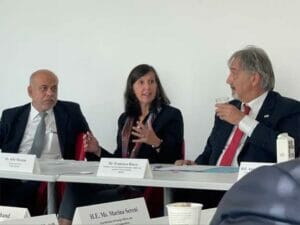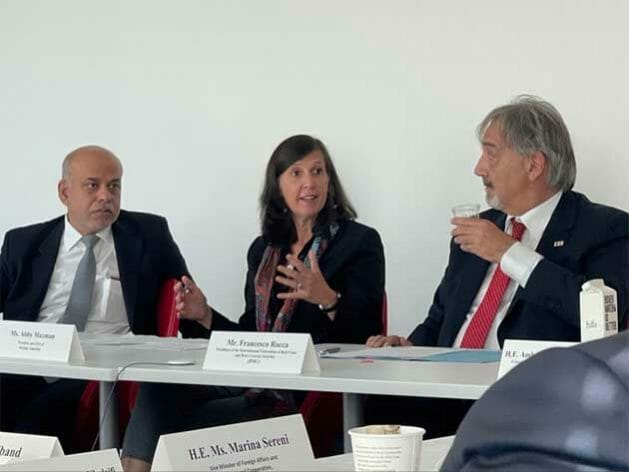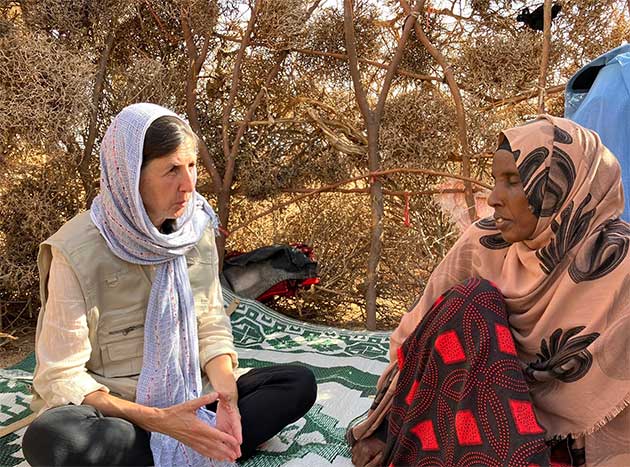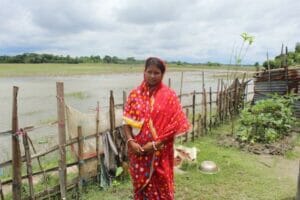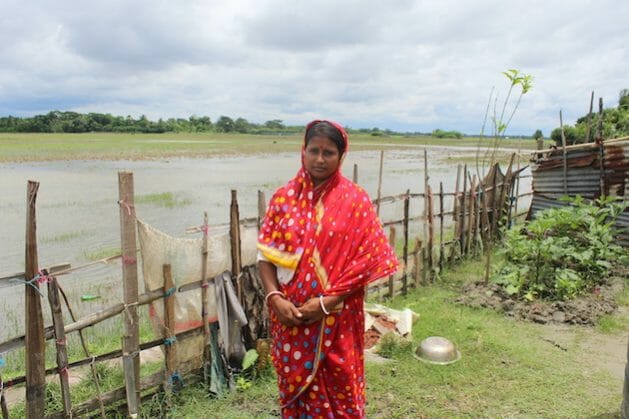
Civil Society, Democracy, Featured, Global, Global Governance, Headlines, Human Rights, TerraViva United Nations

Credit: Pexels via
– With no shortage of catastrophes in the past 15 years worldwide — the democratic left is stepping up to provide stability amid the storm.
Throughout the history of mankind, there have been catastrophes. In modern times, there have also been media representations of catastrophe, including worked-up or even imagined catastrophes.
More than 60 years ago, the German author Friedrich Sieburg wrote about the ‘lust for doom’, which, strangely enough, has a tremendous appeal especially in eras perceived as stable: ‘The everyday life of democracy with its dreary problems is boring, but the impending catastrophes are highly interesting.’
Now that we have had no shortage of real catastrophes in the past 15 years, we no longer have to conjure them up. First came the global financial crisis, which threatened to topple banks and other financial institutions — even states — as if houses of cards.
Later the pandemic arrived and then the military invasion of the second largest country in Europe by the largest. Its shockwaves are devastating half the world, with energy crisis, broken supply chains, price explosion, food shortages, impoverishment and destitution.

Robert Misik
And all the time comes the onrushing climate catastrophe, whose consequences are already apparent and which intersects with the current geopolitical crisis. The global electricity markets are going crazy because there is a lack of gas from Russia, but also because the rivers are drying up, the hydroelectric power plants are empty and nuclear power plants have to be shut down because the cooling water in the rivers is becoming too scarce — even the coal-fired plants are having problems where coal can no longer be shipped.
In any case, disaster is not now something we frivolously imagine because we are bored. It is there — very real for many and at least felt by most. Not only does it colour political debates but an atmosphere of pessimism, insecurity and fear has settled over most societies.
This is so even, perhaps especially, in the affluent societies of the west, which had become accustomed to stability and relative prosperity. A sentiment is spreading: the whole machinery no longer works, it is broken — and the political elites have no plan.
The left choosing stability
Against this backdrop, while the left is trying to develop programmes and instruments to master the crises, to stem the decline in prosperity and the social costs for ordinary people, those on the hard right are betting on things getting even worse, playing up catastrophe.
They hope this will benefit them, that they can thereby achieve electoral success — as with the right-wing radicals in Sweden recently or the right-wing bloc in Italy over the weekend.
It’s no surprise, then, that the far-right contenders paint the ‘elite’ and its networks in dark colours. They rummage through supposedly suppressed news and hidden secrets. They identify, to their satisfaction, how the powerful secure their dominance and say all this is connected. They imagine themselves as if detectives smugly putting pieces of the political puzzle together, in the manner of a latter-day Hercule Poirot.
It is not a completely new phenomenon to offer such a fundamental critique of ‘the system’. What is astonishing is that the far right has hijacked what used to be a prerogative of Marxist intellectuals — and of those activists who imagined a terminal catastrophe would some day issue in a socialist millennium.
Right-wing propaganda has appropriated elements of left-wing critical thinking — the questioning of the conventional and familiar, of the all-too-obvious, and the healthy suspicion of power. Amazingly, the motifs of the enlightenment have been subverted to serve conspiracy theories and fanaticism, in the cause of authoritarianism and nationalism.
The democratic left, in sharp contrast, sees its task today, grosso modo, as providing stability amid the storm. Of course, this is true where it is in government. But it in most cases it also has this reflex of responsibility where it is in opposition.
This has consequences. The left sometimes finds itself defending the status quo, against its deterioration. It knows it cannot score points with simple answers but has to work out complex plans whose realisation is tough.
This liberal left has always stood for freedom, democracy, the rule of law — for social equality and against hierarchy and fascist temptations. The Russian president, Vladimir Putin, has however drawn his country back into despotism in recent decades, aligned with an ideology of expansionism.
While the radical right (and some pro-Russian hard leftists) propose to kneel to Putin, the democratic left supports Ukraine’s right to self-defence and an independent path.
Russia’s imperialism has been met with sanctions from liberal Europe and north America, rebutted in turn in an economic quasi-war with the help of the ‘weapon’ of gas and oil. Yet in a multipolar and chaotic world where not all are on their side, progressives find themselves having to balance decisiveness and prudence.
Now their own economies must be stabilised and protected, and their societies, because the supply of energy and the functioning of the critical infrastructure has a much broader social centrality. This includes changes in the design of energy markets, which simply no longer function when panic on the markets leads to price explosions of 600 or even 1,000 per cent.
The colonisation of lifeworlds by market ideology has however meant that even the essential goods of everyday infrastructure have been left to the mercy of the markets. Energy suppliers which get into trouble have thus to be bailed out by governments.
The dangers of ‘politics without a project’
The effects of inflation are also different from what we know from economics textbooks. Classic inflation occurs when there is a boom, an economy reaches the limits of its capacity and there is more or less full employment. Then asset owners lose, while borrowers gain. But above all, workers and employees do not really lose out: prices rise but so do wages.
Classical inflation is characterised by a wage-price spiral in which real wages rise along with them. Historically, wage earners lost out primarily because of anti-inflationary policies, not because of inflation.
Today, however, inflation is not the result of a boom but an economic shock: it is imported, primarily due to higher energy prices and supply problems. Many companies too are groaning under their energy overheads, as they cannot fully pass on the cost increase to consumers. This in turn will mean workers will not be able to make up fully for price increases through wage rises.
The unions will fight but it will be very difficult to avoid real wage losses. Low wage increases lead to impoverishment and a decline in aggregate demand but high wage increases would lead to more bankruptcies and thus more unemployment.
The most likely result will be a combination of misfortune — a marked recession plus high inflation. Government will have to intervene with price controls, by dramatically accelerating the shift to renewable energy, by providing payments to the most vulnerable segments of the population, by accepting further budget deficits.
None of these solutions will be perfect. We must be careful not to enter a new era of depoliticised pragmatism — a ‘politics without a project’, to borrow an old formulation from a famous German book edited by the legendary Suhrkamp publisher Siegfried Unseld 30 years ago. But there will tend to be no grand design to policy, just muddling through.
Public debates will be characterised by a certain confusion, as we are already observing. On the one hand, most citizens want clear and focused plans, but at the same time they know that there are no easy, simplistic answers.
A pandering left-wing populism is therefore not an attractive alternative. It is not only a too-narrow preaching to the converted but also there is a broad swath of potential support among liberal and left citizens for a politics of reason and responsibility.
In times of such uncertainty, we do not need trumpeters and bullshiters. We need people who can be trusted to do the best they can to sort things out.
Robert Misik is a writer and essayist. He publishes in many German-language newspapers and magazines, including Die Zeit and Die Tageszeitung.
Source: International Politics and Society is published by the Global and European Policy Unit of the Friedrich-Ebert-Stiftung, Hiroshimastrasse 28, D-10785 Berlin.
IPS UN Bureau



